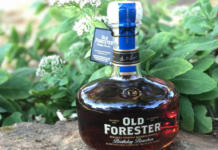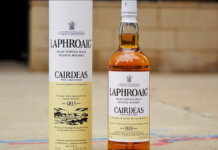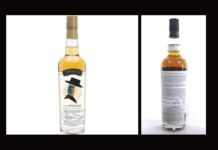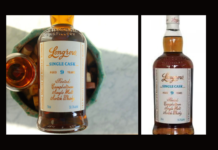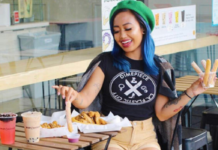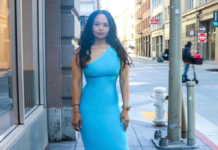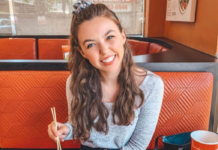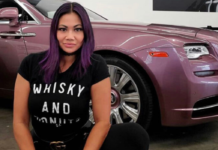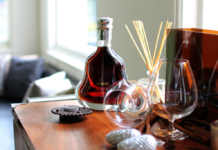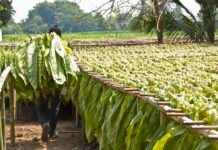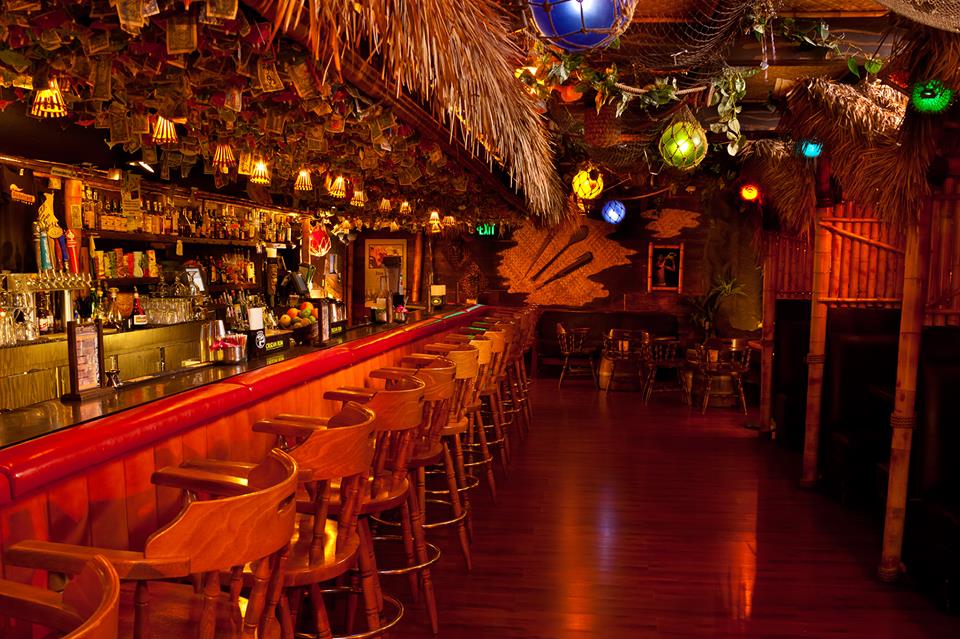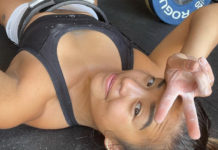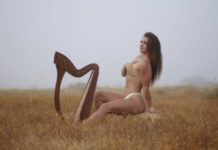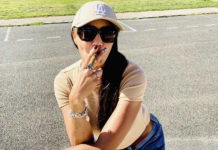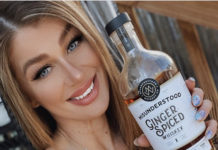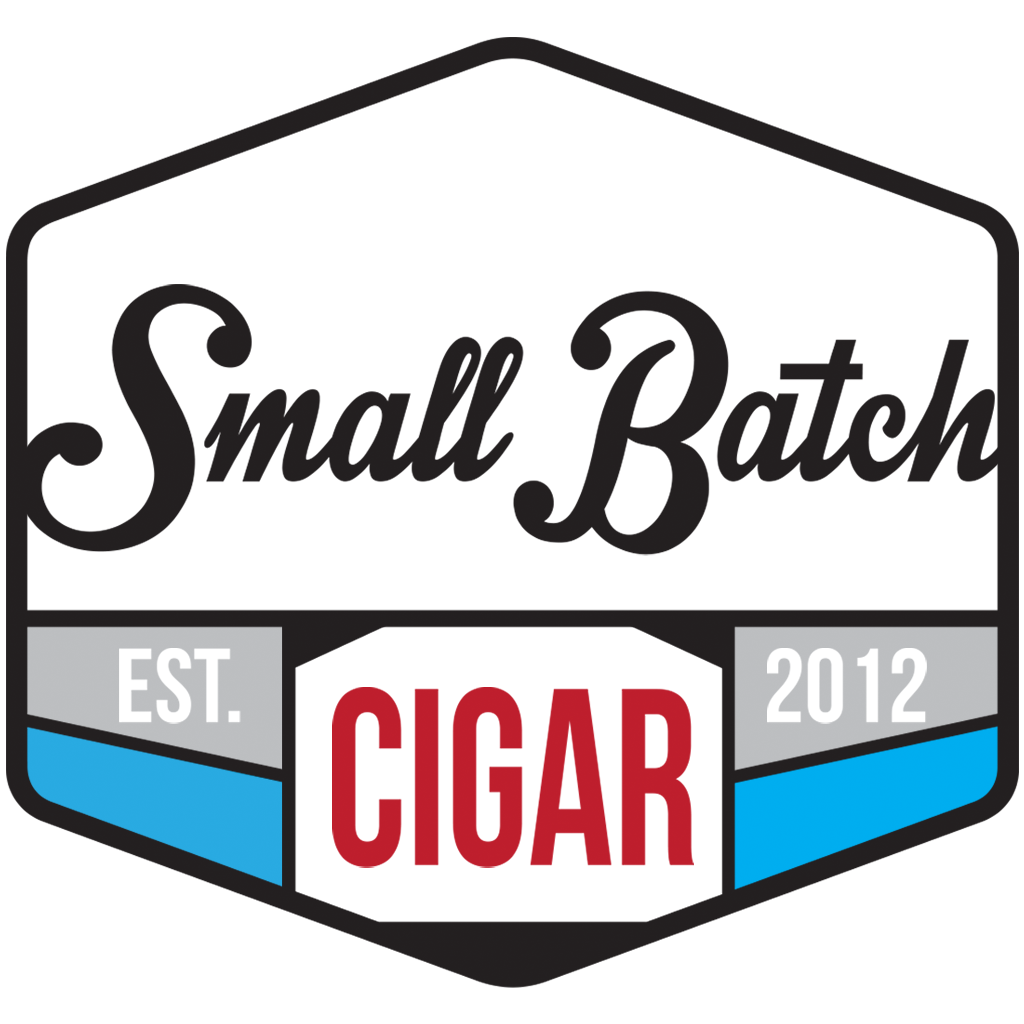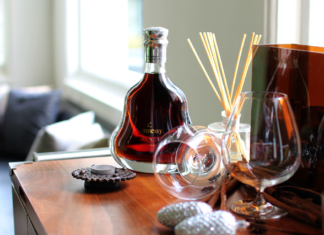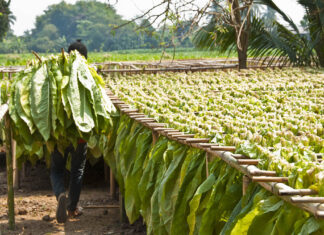Brothers Michael and Mano Thanos opened Forbidden Island in April 2006, along with Tiki Mixologist Martin Cate and it quickly became a beacon for local natives as well as travelers from the “mainland” and around the world! Since then, it’s generated a great deal of media attention, but it’s the loyal love of its patrons that continues to make Forbidden Island an astounding success story. Cate left in 2008 and Thanos, with the help of some extremely talented managers and bar staff, took this neighborhood bar and transformed it into a world class Tiki destination. Today, FI is hopping with a wide variety of live musical acts, unique events and has become a haven for cutting edge contemporary and classic Tiki mixology. In addition to the stellar drinks and music, FI offers many popular special events like its annual Luau, Parking Lot Sale and Surf music festival. Forbidden Island is a retro oasis in the cultural wasteland of the 21st century.
We spoke to Michael Thanos about the rum scene and what exactly is the Tiki Bar Scene. With rum becoming such a sensation, almost as big as whiskey, we wanted to find out as much as we could about this market. And Michael is the guy to ask.
What is your background? Tell us a little about yourself before opening up Forbidden Island Alameda.
MT: I am of Greek heritage, raised in South Africa and living in the US for 25 years. Although there is no tiki in South Africa, I have always held a fascination for all things mid-century and that led me to the Tiki path in the late 90s.
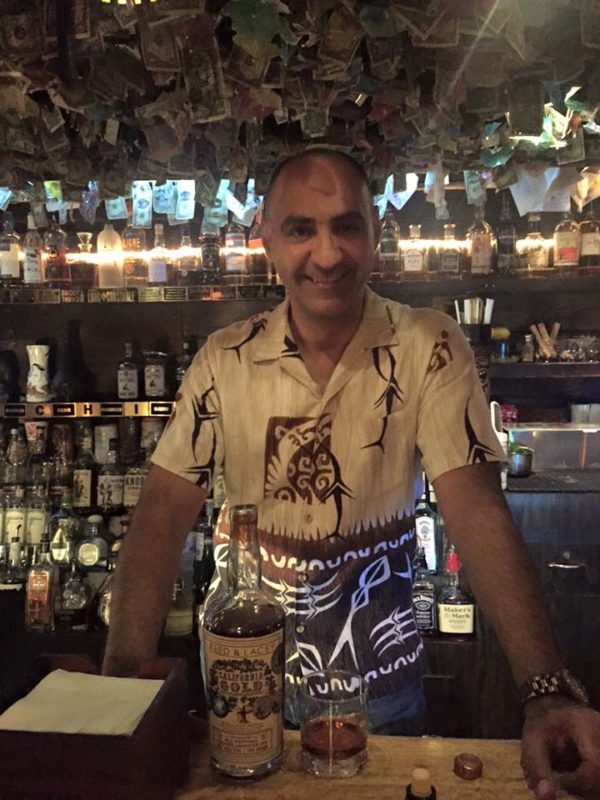
(Photo Credit : TikiwithRay.com)
So just to get into it, how did the Forbidden Island Alameda get started? What was your vision behind the project? Tell us about the name.
MT: Since tasting my first Trader Vics Mai Tai at their (primary) location in Emeryville and a fortuitous visit to the incredible Mai Kai in Ft. Lauderdale, FL I became obsessed with mid-century style tiki bars and the cocktails that were being served in such bars. This led me to discover and frequent existing Tiki bars in the San Francisco Bay Area, which had me disappointed, because the drinks that they were serving bore no relation to the types of drinks served in these classic Tiki temples.
It also dawned on me that my adoptive city of Oakland (a hot bed of Tiki in the 60s, not only home to several Tiki/ nautical Meccas, but recognized as the birthplace of the Mai Tai) was at that time, completely bereft of any Tiki establishments! I was intent to “bring Tiki back to Oakland” and in so doing, bring back “classic” tiki cocktails. An opportunity came along to experiment with this concept and I opened up Oakland first Tiki revival bar in 2003. It was called Conga Lounge and located upstairs from my family’s pizza business in the affluent Rockridge district of Oakland.
These were still dark days for Tiki and during the build out, folks would scratch their heads as to why we’re opening a Tiki bar and would imply jokingly, “So you’re going to be serving Mai Tais?..”. Conga Lounge was an instant success. From day 1 we promoted the Mai Tai as an Oakland original and served it the way creator Trader Vis Bergeron intended. In a few short years, we changed people’s perception of Tiki and decided it was time to achieve the dream…find the perfect dive bar and convert it into a classic mid-century style Tiki Lounge, which would celebrate Poly Pop as well as transport folks to another time another place! As for the name, mid-century Tiki had its own “soundtrack”, a musical genre called Exotica, made famous by band leaders such as Les Baxter, Martin Denny and Arthur Lyman. One of Martin Denny’s most famous LP’s is titled “Forbidden Island”.
Although also the name of a 1955 movie, the name was chosen as an homage to Martin Denny and the official Tiki soundtrack of the time, Exotica!
What challenges (if any) did you first face when you decided to go into this venture.
MT: The main challenge really was going for a vintage niche concept, which at the time, was reeling from 3 plus decades of bad publicity. Since the late 60’s, the concept of Tiki had fallen into disrepute. The 70’s and disco drinks era only made things worse as Tiki bar operators started using mixes and cheaper quality product to combat sky rocketing costs. By the 80s and beyond, the Tiki cocktail had universally become a sugary sweet mess that was more commonly associated with drunken escapades and tacky Luaus, than the serious well blended and balanced craft cocktail it had been in the mid century. In a nutshell, reviving a concept that was perceived as laughably old fashioned and tacky was a challenge unto itself. Added to that, of course, was the fact that I was completely unfamiliar with a bar operation. My only hospitality experience up to that point, had been in the pizza restaurant field.
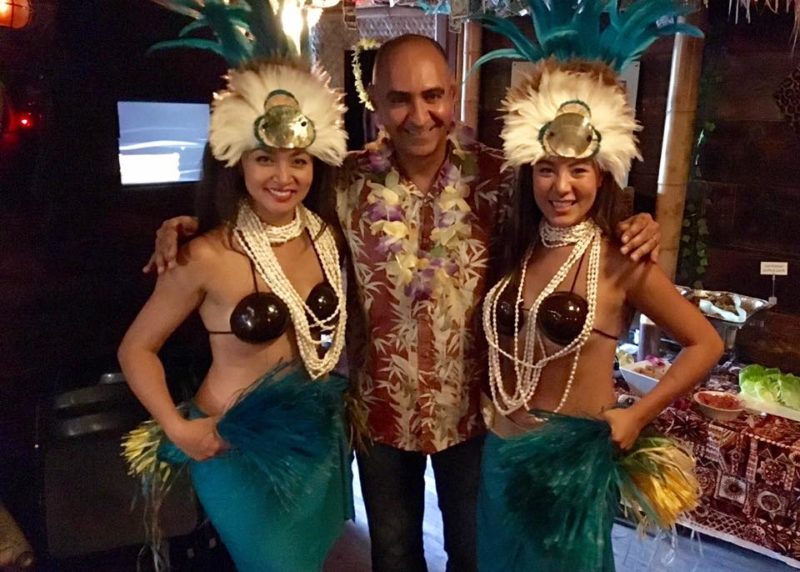
(Photo Credit : TikiwithRay.com)
Can you give us the play by play of your typical day at the bar? What was your proudest moment of working at the venue?
MT: I start my day by reading the shift report from the night before and seeing what the needs would be for the following day. An almost daily check in with my manager to determine and take care of pressing issues. Although a small bar, we only use fresh citrus and house made syrups in our cocktails and sport close to 300 liquors, including at least 200 brands of rum. It takes a lot of time and energy to keep these in stock and ensure we have what we need on a daily basis, not only to run a 35+ Tiki classic cocktail menu, but two rum programs.
How do you stay current with all the latest rum? With all the independent bottlers and craft distillers.
MT: Definitely rum blog such as Inu A Kena, Coktail Wonk and Ministry of Rum. I’m discovering new brands and expressions almost on a daily basis. Plus of course, the hard work of our reps, especially those working at Pacific Edge and JVS Import Co, always bringing by such incredible, allocated and hard to find rums.
How many different types of rum do you have available at your venue?
MT: Just under 200.
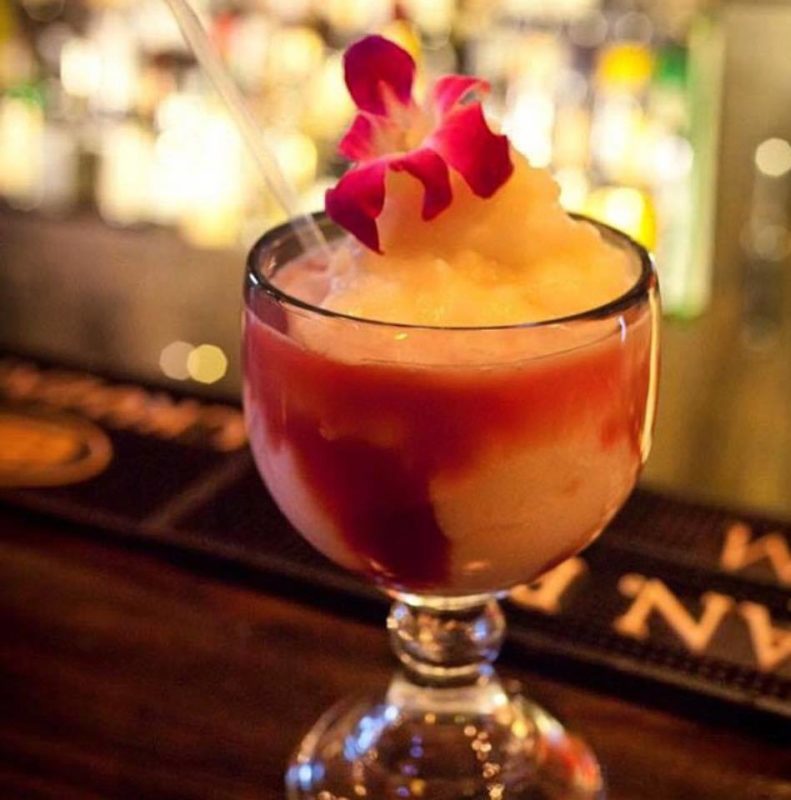 Is Forbidden Island known for anything else besides great Rum selection?
Is Forbidden Island known for anything else besides great Rum selection?
MT: Our tiki drinks and the fact that we pretty much laid the blue print for a mid-century style Tiki lounge when we first opened 11 years ago. Today, Tiki bars are opening far and wide with a look and feel and bar program almost identical to ours!
What are you most excited about in the Rum scene?
MT: Definitely the cask strength limited edition rums sourced by folks such as Berry Brothers, Hamilton and Samaroli. The fact that they offer us all an opportunity to taste the types of rums being created in little villages in Jamaica or Haiti, is astounding! A visit to any rum producing nation would only expose us to the commercial rum distillers and their product and if it weren’t for these craft bottlers and distributors, we would never have the opportunity to taste these incredible rums!
What kind of crowd does your venue attract ?
MT: Across the board, from 20s through 60s. As an escapist, theme bar in a time where we are seeing an astounding Tiki renaissance, we have a huge popularity among the young, who have never experienced drinks of this nature. This extends to older generations, who may have fond memories or huge nostalgia of long lost tiki bars and/ or parents that may have had tiki bars/ parties in their basements.
Is there any particular type of Rum that sells more than the other?
MT: Well marketed rums certainly sell better, such as Zaya, Ron Zacapa and Flor de Cana. When folks walk into Forbidden Island and see our shelves filled from side to side with rum brands and expressions form all over the world, they tend to go for brands they may have seen at a Bev Mo. And that’s where the Kill Devil Club comes in…
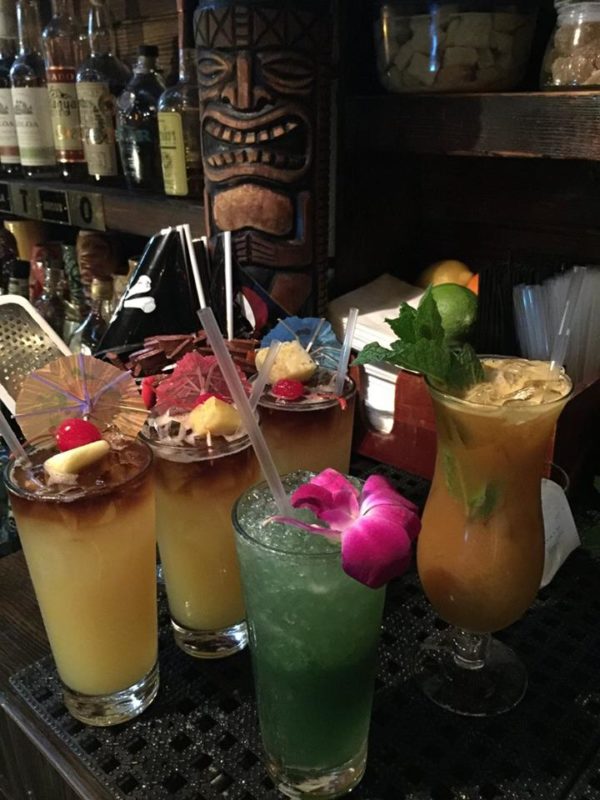 Can you give us some information on the Kill Devil Club?
Can you give us some information on the Kill Devil Club?
MT: At Forbidden Island, we have two distinct rum programs. The Kill Devil Club and Kill Devil 2.0. Entry into the Kill Devil Club is achieved by sampling (2oz shots) of every one of our 100 premium rums, organized by region and occupying a 40ft shelf behind the bar. Those that complete the list are awarded a personal plaque on the “rum shelf”, a bottle of rum and formally become members of our rum club, with ongoing perks like discounts and “skip the line” status for our big summer events. All Kill Devil members (ie. Those that have completed the list) are then eligible to do the 2.0 list, a library selection of rums 10 years and older, overproof, limited edition, allocated and generally unavailable. The prize/ award for its completion is a limited edition, custom Tiki mug, created by one of Hawaii’s leading mug makers, Beachbumz aka Scott Taylor.
From the moment we opened in 2006, we were intent on being a rum bar as much as a tiki bar. There again, we were in dark territory. No one was sipping rum back then!! Lol.
The common perception was that rum was a spirit that one got drunk on in College and swore to never touch again! Just like the Tiki misconception, we wanted to change that and give folks the opportunity to taste some “real” rum! We opened with a modest rum selection, although huge at the time, of 35 rums. For the first time in Northern California, as far as we know, you’d see rum brands like Diplomatico, Ron Zacapa and even the ultra rare British Royal Navy rum side by side in a bar! We came up with the concept of a “list” or club, in order for folks to have an incentive to taste all these incredible rums!
We came up with the Kill Devil Club, named after the Colonial term for Rum. The concept was to separate the serious imbibers, those wanting to fully immerse themselves into the wonderful world of rum, from the cocktail patrons or Tiki curious. A club that would cater to “rummies”, that could meet at the bar, discuss about all things rum related and share info and stories of travels in the Caribbean etc. What ended up happening was that most patrons were immediately intrigued, started doing the list and over the years, we’ve “schooled” literally hundreds of folks who walked into the bar thinking rum was pretty much limited to Bacardi and Captain Morgan.
How big is the Rum scene in California?
MT: There’s no doubt that California’s rum scene is booming, and Tiki is undoubtedly the biggest reason for it. Whether it’s at the bar or making drinks at home, discerning drinkers can make out the qualities of the different rums that go into their drinks, which inspires further curiosity and investigation. But tiki is not the only reason for rum’s return to the limelight. Thanks to larger interest in brown spirits like Bourbon and Scotch, a whole new generation of drinkers has an appreciation for sipping booze on its own, and it was only a matter of time until they “discovered” rum. Now that they’re here, these folks are finding that rum is not only a delicious and well-made spirit, it’s also an incredible value compared to many whiskies. It has definitely exploded in California, or at least in the San Francisco Bay Area, with the opening of rum focused bars like Smuggler’s Cove, Pagan Idol, Longitude and Rum & Sugar in recent years.
Anything else you’d like to share with our readers?
MT: Having just celebrated our 11th anniversary, I’ve certainly been reflecting a great deal. I’m a huge fan of Tiki, for almost 20 years now, who felt very disappointed with the state of this great art form (in the early part of the 21st century) that I felt a personal need to revitalize it! It is certainly interesting to ponder what the future of tiki would have been if it wasn’t for Forbidden Island and by association, if it wasn’t for my humble efforts. Despite the obvious spin offs, such as Smuggler’s Cove and Longitude, by Forbidden Island staff, there are several Tiki bars/ restaurants that have bear a direct lineage to FI! (Hale Pele, Three Dots and a Dash, Lost Lake, False Idol) and countless across the nation, that were directly influenced by FI’s sheer existence.
Brice Ginardi, who created the short-lived but true to the core Tiki bar in the Big Island, Okole Maluna, was a regular at FI who so fell in love with our concept, he wanted to open his own bar. Jason Alexander, after a visit to Okole Maluna, bet his future in Tiki and opened Tacoma Cabana. Even Trader Vics shed its “old generation” image and created a stripped down model of their concept,
The TV Mai Tai bars, after a top level TV meeting at Forbidden Island in 2006! Over the year’s folks have come through our hallowed walls, talking of Tiki bars they are currently opening/ working on and have pilgrimage to our little slice of Paradise to see exactly how it’s done! Not to say that the Tiki revival would not have followed a similar path, due to efforts of Beachbum Berry and others, but it’s undeniable that the pure existence of Forbidden Island is personally responsible for ushering in the current wave of Tiki bars that we now know and enjoy! And if I’d never visited Trader Vics or Mai Kai, who knows what path the tiki revival would have taken…





